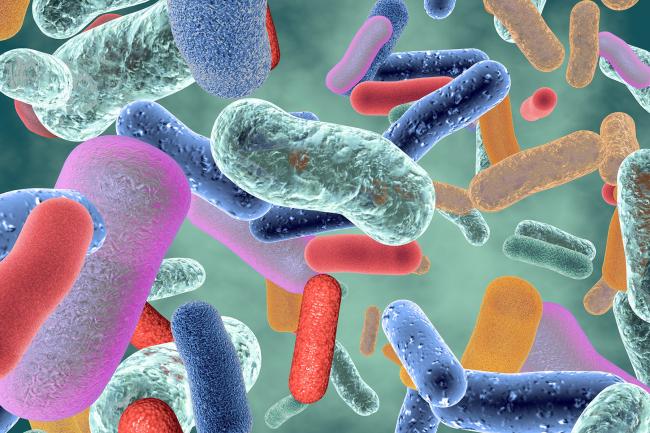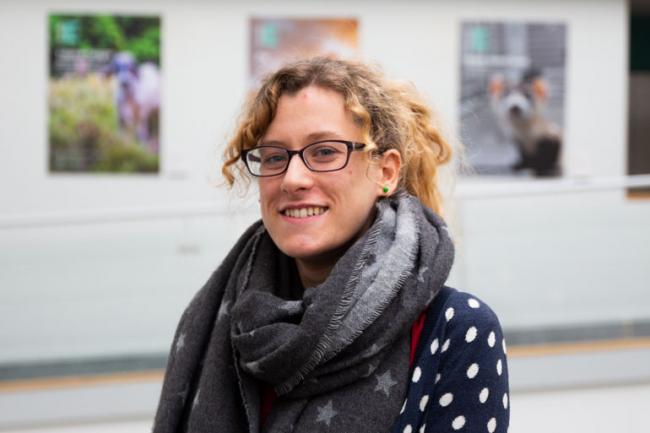
A computer model could help to reveal how some infectious diseases - including COVID-19 - trigger an overactive immune response in certain patients, which can drive inflammation and lead to serious complications or even death.
The work, published in Nature Partner Journal Systems Biology and Applications, sheds new light on how SARS-CoV-2 infects the gut, which has been overlooked due to the focus on the lungs.
“Most of the attention around COVID-19 has understandably been on the lungs,” explains study main author Dr Tamás Korcsmáros, Group Leader at the Earlham Institute and Quadram Institute. “After all, COVID-19 is mainly a respiratory syndrome. But a lot of other organs can get infected by SARS-CoV-2.
“The gut is a particularly interesting area yet we know very little about how a gut infection sends a normal immune response spiralling out of control and contributes to disease severity.”
The open access tool uses the latest computational approaches to carefully track the response to infection in both the upper airways and the intestine.
By mapping out the interactions that lead to inflammation, the Norwich-based researchers have revealed a number of potential molecular targets for anti-inflammatory medicines - some of which already exist for the treatment of other conditions.
Scientists based at the Earlham Institute and Quadram Institute, along with international partners from University of Heidelberg and EMBL (Germany) as well as from KU Leuven (Belgium), wanted to understand the cross-talk between epithelial and immune cells in the gut during an infection.
Epithelial cells line the surfaces of tissues and organs, forming a protective barrier and helping to police the movement of substances across this membrane. These cells also play an important role in the body’s response to infection, working in tandem with immune cells.
Previous research has tended to look at each component in isolation and, without the latest computational approaches, has been unable to overcome hurdles of scale and complexity to make sense of disconnected datasets.
One of the key things the team wanted to understand was how the interplay between infected epithelial cells and gut immune cells might lead to an overactive immune response - known as a cytokine storm - which drives inflammation and can be potentially deadly.
The team used data from human organoids - small, three dimensional tissue cultures that more closely reflect the complexity of organs than individual cells - that had been infected with SARS-CoV-2, as well as published data from previous studies about resident immune cells in the gut.
The team brought together two existing bioinformatics tools they had developed - ViralLink and CARNIVAL - with intercellular network approaches from OmniPath. Combined with cell-type specific data from advanced sequencing techniques, they were able to model how SARS-CoV-2 directly affects the interactions between epithelial and immune cell types during infection.
The model confirms key differences between the immune response in the lungs and the gut, where specific intestinal cells - enterocytes - appear to be targeted during an infection. The model also revealed some of the tactics used by the virus to evade the immune response, which includes disrupting or ‘jamming’ signals used by immune cells to signal the presence of the virus and others to be involved in fighting off an infection.
The model can also make predictions about both local and systemic immune responses, which could potentially help to guide treatment decisions. Crucially, it could be applied to new variants or coronavirus strains in the future to predict the immune response to these new infections.
Martina Poletti, co-first author at the Earlham Institute and Quadram Institute, said: “The gut is an important interface with our environment, and it can guide our immune system to keep our body in order and protect us from infections. But these fine-tuned signals can sometimes stop working properly, which can lead to dangerous levels of inflammation in our vital organs.
“We really wanted to understand which particular inflammatory pathways and cell types are responsible for driving this process in COVID-19 patients, and to show that an integrative computational approach with cutting-edge experimental methods can advance our understanding on the initiation and maintenance of this overreaction.”
Dr Tamás Korcsmáros added: “The insights we’ve generated could be important in informing the treatment of people with existing bowel conditions or undergoing chemotherapy, who are particularly vulnerable from viral infections.
“Understanding the signalling pathways that are being disrupted during infection allows us to identify potential therapies. Thanks to this study, we’ve identified some potential targets of interest for future research.”
Dr Agatha Treveil, co-first author also based at the Earlham Institute and Quadram Institute for the research, said: “This is a complex-integrative approach we’re able to provide for the wider research community. Others can now use it to carry out similar analyses on different data, different pathogens, or different organs.
“We need this combination of different experimental and computational approaches to fully map the communication taking place between these key cell types during an infection and to understand the wider picture of what infection does to the body.”




